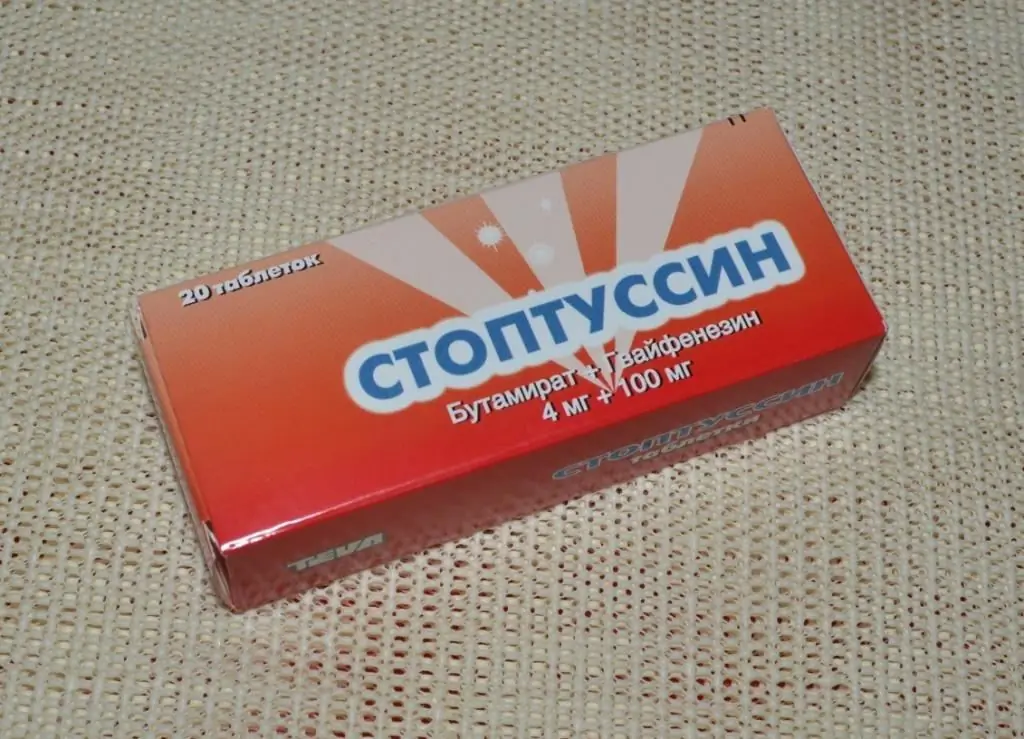2026 Author: Priscilla Miln | [email protected]. Last modified: 2025-01-22 17:55:27
The bee community is prone to diseases that, if not treated in time, can lead not only to the death of individual individuals, but of the entire swarm. In order to avoid disastrous consequences, it is necessary to take timely measures. Most often, diseases are treated with drugs. From a huge variety of drugs, it is necessary to choose the right drugs for the treatment of bees.
The most common diseases of the bee community

There are many diseases from which members of the bee family suffer. However, the most common diseases can be identified.
- Acarapidosis. The causative agent of the disease are Acarapis woody mites. Most often, the disease spreads during the cold season, when representatives of the bee community approach each other. At this time, ticks move from one bee to another. The danger lies in the fact that an infected family is able to endure up to 5 winters, transmitting the infection in the summer to the rest of the bees.communities. Thus, acarapidosis leads to the death of a large number of bee colonies.
- Ascospherosis. The causative agent is a fungus. An untreated disease in time leads to the fact that infected families become dysfunctional for a long period. The presence of this disease is indicated by the presence of mummified larvae in the bee nest.
- Aspergillosis. This is an infectious disease caused by a fungus. The causative agent of the disease can harm not only all individuals of the bee community, but also domestic animals and humans.
- Varroatosis. One of the most common diseases. The causative agent is the Varroa mite. The main problem is that in the initial stages, varroatosis is almost asymptomatic.
- Foulbrood disease. The name of the disease is due to the fact that bees infected with this disease die and turn into a putrefactive mass. At the initial stages, the disease may not be noticeable even to an experienced beekeeper, since at first an insignificant part of the larvae dies and adult individuals are already infected.
- Nosema. In the summer, the disease is asymptomatic. The consequences of the disease become noticeable only when cold weather sets in, in autumn and winter, when infected individuals weaken and die.
Treatment of acarapidosis of bees

The most effective drugs for the treatment of acarapidosis in bees are Folbex and Polisan. Both medicines come in the form of strips that the beekeeper needs to placeinside the bee nest. Before placing the strips directly inside the nest, they must be set on fire. Also effective "Tedio" in the form of tablets. Before burning the strips, it is necessary to shorten the nest, close all existing slots and the top of the bee nest with oilcloth. After placing the medicine inside, it is necessary to close all openings. Re-treatment is necessary from 6 to 10 times with a regularity of 2-3 days. It is important to remember that the drug placed inside the bee nest should not burn, but smolder. It is necessary to carry out the treatment procedure in the evening, after the summer of bees.
The following drugs are also used to treat bees from acarapidosis: Fourier liquid, "Tedion", "Folbex", "Bipin". In order to get rid of the disease, you can use oxalic acid, nitrobenzene, monochlorobenzene.
Drugs for the treatment of ascospherosis

Treatment of ascospherosis can be carried out with the help of folk remedies and specialized preparations. The most effective drug for bees in the fight against ascospherosis is Unisan. The drug is consumed quite economically: 1 ml must be diluted in half a liter of warm water. The resulting solution is enough to process all the honeycombs. It is necessary to carry out spraying of nests together with the bees inside. To process one frame, you need no more than 12 milliliters of liquid. It is necessary to repeat the spraying procedure every three days until the complete disappearance of all signs of the disease.
Aspergillosis treatment
If the diagnosis is confirmed by veterinarians, it is necessary to establish a quarantine regime for the entire apiary. After that, it is necessary to receive detailed instructions on the treatment of bees in the event that the disease is not started and it is advisable to carry out medical procedures.
For the treatment of aspergillosis, preparations for bees approved by the veterinary department, namely Askosan, Unisan, Askomizol, are suitable. It is worth considering that treatment is only advisable if the number of affected bees is small. If many bees are infected, the beekeeper's only recourse is to kill the brood and adults using sulfur dioxide. Honeycombs must be burned without fail, and thorough disinfection should be carried out in bee houses.
If there are few affected individuals, it is necessary to carry out a decontamination procedure. But before the start of the training course, it is necessary to strengthen the weak bee colonies, and replace the queens affected by aspergillosis with he althy ones. After that, it is imperative to transfer the bees to clean hives and provide the bee colonies with enough food.
Medications for the treatment of varroatosis

There are several ways to combat varroatosis, including the complex use of physical and chemical methods, drug treatment, the use of acids and essential oils, and biochemical methods.
It is worth noting that the most effective treatment will be based on a combinationseveral means of struggle.
The most effective drugs for the treatment of bees from varroatosis, such as "Phenothiazine", "Oxalic acid", "Apigard", "Apistan". It is very important to carefully study the instructions before using drugs, since improper use of the drug can cause addiction to the pathogen, tick, and the treatment will be ineffective.
Effective and safe use of Akarasana. This is a preparation for the treatment of bees affected by the disease. The procedure must be carried out once a week. If the layering is without brood, then the bees should be processed every other day.
Preparations for bees "Amitriz" and "Fluvalinat" are also effective in combating the disease of the bee family. These preparations are applied to bees in the spring. The use of "Bipin-T" is effective. However, its use can cause aggressive behavior of bees towards the queen. This is due to the presence of a component with a specific aroma in the composition of the medicine.
The drug can only be used to treat not too weakened bee colonies. For weak communities, the use of the remedy is contraindicated. Primary processing is carried out immediately after the honey harvest. A second procedure must be carried out before winter. Before using the drug, you must carefully study the instructions, as it contains toxic and dangerous components. The treatment procedure should be carried out twice with a break of one week.
Means to combat foulbrooddisease

After confirming the diagnosis, specialists at the apiary introduce a quarantine regime. If several families are affected, treatment is inappropriate, and the only way out is the complete destruction of the family. If the diseased colonies can be saved and their viability restored, the bees are transplanted into clean hives. It is necessary to carry out the manipulation in the evening. After transplantation, it is necessary to regularly feed the bees with medicinal syrup. It can be poured into honeycombs or sprayed on them and bees (in case the bees refuse to accept the syrup). The course of treatment is carried out every 5-7 days until complete recovery. In order to avoid the recurrence of the disease, it is recommended to feed he althy bees with syrup.
Making medicinal syrup
Sugar syrup and preparations are needed to prepare the medicine. Preparations for bees "Neomycin", "Erythromycin", "Tetracycline", "Oxytetracycline" are suitable as a constituent component. To calculate the required dosage, you must initially understand how much sugar syrup is needed, based on the number of sick families. 100-150 g of therapeutic liquid is enough for one street. To each liter of syrup, you need to add one of the above drugs.
Ways to deal with neomatosis

The main stage of treatment is the sanitation of hives. Sanitation is carried out with a 2% solution of soda or ash liquor. After completion of the procedure, you need to process the hivessoap solution or by burning. He althy bees at the end of the spring flyby are placed in uninfected houses, and sick individuals are isolated and treated with antiseptic agents.
The following drugs are used to treat infected individuals: "Nosemacid" in the form of a powder, "Enteroseptol" in the form of tablets, "Fumagilin" in capsules. The most commonly used "Nosemacid".
Prevention of disease in bees

In order to avoid various diseases in bees, it is necessary to regularly resort to preventive measures:
- bee houses must be kept clean;
- the location of the hives should be in dry and warm places;
- regularly cultivate the land under the houses;
- to provide bee families with quality food and in sufficient quantity;
- avoid handling hives in bad weather;
- avoid stimulating colonies with antibiotics to avoid weakening bee immunity.
Effective use of the drug "Kas" for bees to prevent the occurrence of varroatosis. Most of the preparations for the treatment and prevention of bee diseases are produced by CJSC "Agrobioprom". Preparations for bees of this manufacturer are widely distributed not only in Russia, but also abroad. As alternative methods of prevention, Chinese drugs forbees. As a preventive measure, the Loseval preparation for bees is effective, which is used in the spring after the first flyby. There are no contraindications to the use of this remedy. However, experienced specialists recommend using it at a temperature not lower than +18.
Lozeval for bees
The drug is used as a solution, which consists of two components: medicine and water. For the treatment of one bee family, it is necessary to use 5 ml of "Lozeval" per 300 gr. water. With the resulting solution, you need to treat the honeycombs or place the medicinal liquid directly into the feed at the rate of 50 ml per family of bees.
You need to carry out the procedure three times every two days. The course of treatment should be carried out throughout the week. Then they take a week break.
Reviews about the drug are more positive. Experts note that after using the tool, the working capacity of individuals increases. Effective use of "Lozeval" for the treatment of infected bees. With it, you can speed up the process of recovery of individuals and avoid infecting other bees.
Means "Kas-81"
Kas-81 preparation for bees is considered to be an effective remedy for disease control. The main advantage of the product is the natural composition. The main components are bitter wormwood and pine buds. It is important to correctly approach the preparation of raw materials for the preparation, since the collection of components must be carried out at a strictly defined time. Wormwood must be harvested during the growing season of the plant and during the flowering period. And pinebuds are harvested during the growing season.
The use of the drug is indicated for varroatosis and nosematosis for the treatment of weak individuals. In addition, the drug stimulates the early spring development of bee colonies, thereby increasing the productivity of the queen bee.
Conclusion
Bees in the process of evolution have acquired the ability to prevent the occurrence of many diseases. But despite this, the occurrence of diseases is observed quite often. It is necessary to identify the causative agent of the disease in time, establish a diagnosis and receive recommendations for the treatment of the bee family.
If the disease is not detected in time, the only way out may be the complete destruction of bee families. In order to prevent this, it is necessary to choose from the whole set of medicinal preparations exactly the remedy that will not only help cure weakened individuals, but also prevent re-infection.
Recommended:
"Flemoklav Solutab" during pregnancy: indications for use, dosage, reviews

"Flemoclav Solutab" is a broad-spectrum antimicrobial drug. The medicine helps to cope with colds, sore throats and pharyngitis. Well tolerated by patients. It is considered one of the safest antibiotics. "Flemoklav Solutab" during pregnancy is also allowed to be used. Studies have shown that this medication does not harm the fetus and does not adversely affect the condition of a pregnant woman
Vitamins "Solgar" for pregnant women: composition, indications, instructions for use, reviews

A woman, having learned that she is pregnant, in most cases begins to think about taking vitamins. After all, every expectant mother cares about the he alth and development of her baby. And in some situations, taking multivitamin complexes becomes simply necessary. In this article we will talk about the Solgar vitamins, which are prescribed for pregnant and lactating women
"Motilium" during pregnancy: indications, instructions for use, reviews

Digestive disorders during childbearing are very common. After all, all the organs of a woman undergo great changes. This can lead to nausea, vomiting, heartburn, and other discomforts. Undoubtedly, these feelings overshadow the period of bearing a child, and therefore a woman seeks to get rid of them. Can "Motilium" be used during pregnancy and how should it be used?
Cough preparations during pregnancy in the 2nd trimester: instructions for use, dosage and reviews

Cough preparations during pregnancy in the 2nd trimester must be selected very carefully, as some can be harmful. All medicines must be prescribed only by the attending physician, taking into account the available indications and contraindications
Cough preparations during pregnancy in the 3rd trimester: instructions for use and reviews

If a woman begins to suffer from a cough while carrying a child, it is not so easy to deal with it. Not every medicine created to eliminate this unpleasant symptom is allowed for pregnant women. An experienced doctor should choose the appropriate drug. Women should be especially careful in the third, final, part of the term. At this stage, there are many prohibitions, so the fight against coughing can drag on for a long time

